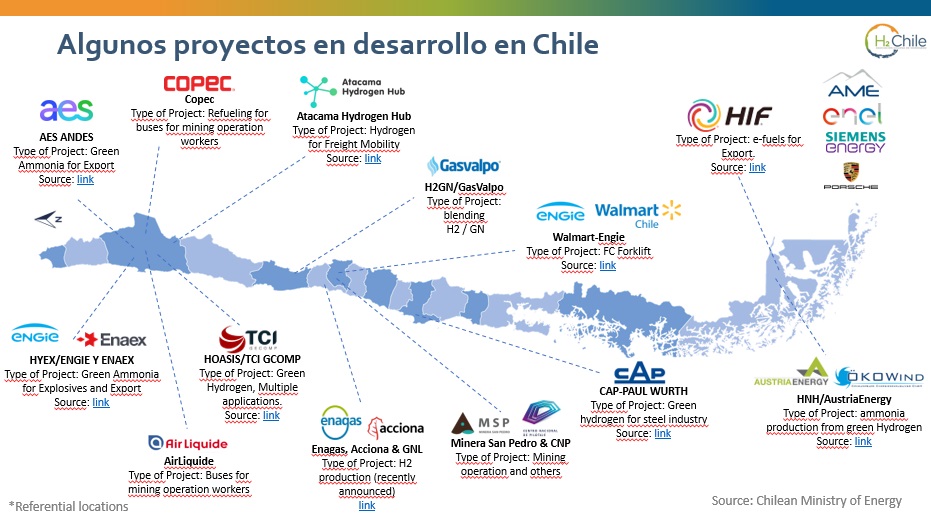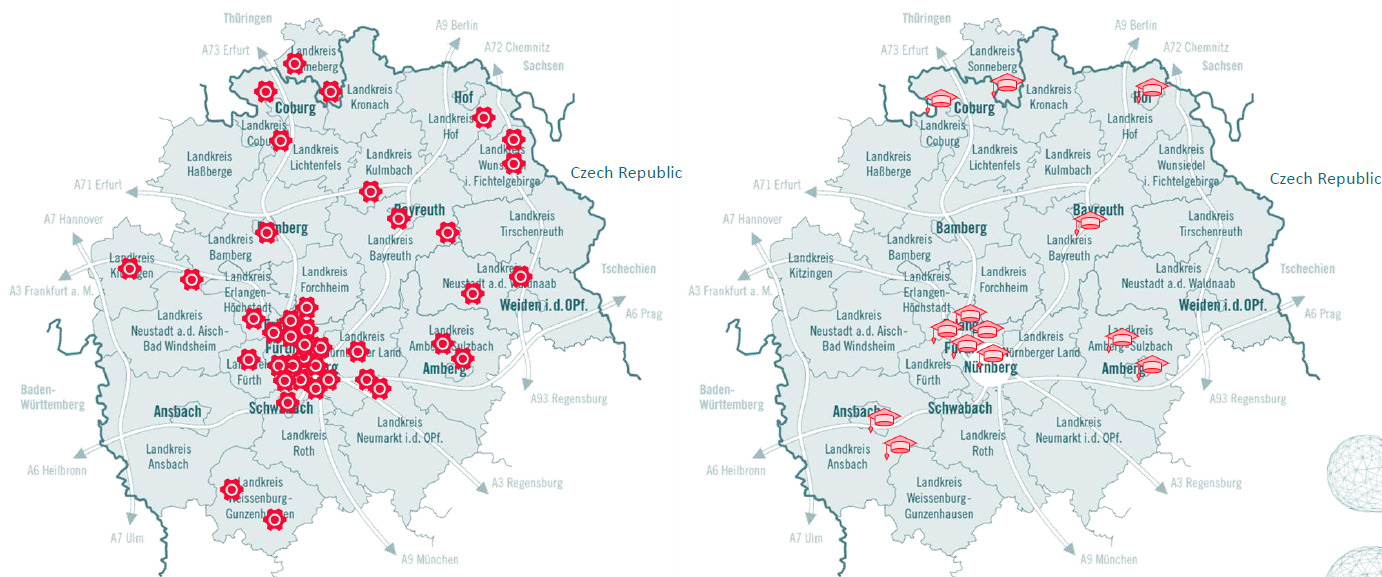Hydrogen between Chile and Nuremberg
We need new and reliable partner countries for the future of our energy supply. One of these partners in hydrogen supply should be the Andean Republic of Chile, argues Ernesto Buholzer Sepúlveda.
Germany is facing major energy policy challenges after Russia’s invasion of Ukraine and the move away from Russian gas To achieve a sustainable and secure supply of (green) hydrogen, it is crucial to identify reliable partners with sufficient renewable energy production capacities, technical expertise, and human resources. Above all, it requires deep trust in the institutions and business partners, in the political system and in actors on the ground.
Such trust can only be built through cooperation on an equal footing, with a willingness to develop each other further, and to the long-term benefit of both civil society and economic actors.
These goals are hard to achieve with autocratic regimes, which lack the necessary commitment to sustainability and social factors. Against this background, it is striking that Qatar, among others, is to play a key role in Germany’s hydrogen supply.
Instead, it is essential to seek partners who share our values and are democratically governed. One such potential partner is Chile.
We need new partners
Chile is a centralised South American country. On an area more than twice the size of Germany, only just under 20 million inhabitants live on more than 6,400 km of coastline – 90 percent of them around the capital Santiago. Today, the Andean country is a presidential democracy with a young left-wing government that has ambitions to develop in new industries and to expand the production of green hydrogen on a large scale.
The country has the best prerequisites for this, as it has enormous resources for the production of renewable energies.
Nowhere does the sun shine more strongly than in Chile’s Atacama Desert in the north, and there is hardly a region in the world where the wind blows as strongly and continuously as in southern Chile, in Patagonia. With such favorable conditions, Chile has the potential to generate renewable energy up to 70 times its current domestic demand, as well as producing 3-4 times Germany’s projected import demand for green hydrogen by 2050.
In addition to natural resources, common democratic values and a reliable legal system , which Chile shares with Germany, the Andean country also offers a good investment climate and a strong institutional infrastructure.
Chile as a strong partner for the production of green hydrogen as well as the industrialisation of the sector
Chile therefore offers ideal conditions for producing green hydrogen sustainably for Germany as a long-term partner along a completely CO2-neutral value chain. The country could play a decisive role in the diversification of the German raw materials portfolio. By 2040, the Andean republic would like to become the largest producer of hydrogen and its derivatives and be able to offer it at the lowest price worldwide. There are already more than 60 hydrogen projects in the country, long-standing good business relations with several German companies and bilateral agreements that form an important basis for a partnership at eye level. The country has well-trained workersand a strong network of international companies in various export industries.
Chile’s advantages, in addition to its low price and huge production capacity, include the promise of a completely carbon-neutral supply chain. This will also play an important role for many German companies when it comes to reducing the CO2 footprint of products throughout their entire lifecycle in the face of increasing consumer demands, supply chain legislation and sustainable self-image.
Cooperation between equals
In the long term, Germany could meet its energy needs not only for electricity, but also for heat generation, industry and transport, as well as build security of supply and a sustainable supply chain in a highly competitive market. Chile, on the other hand, could not only make large profits from exports of H2 and its derivatives, but also expand the industrial and service sectors in the hydrogen cluster. This further development of the value chain would be essential for Chile to diversify its economy and achieve higher welfare levels. For Chile, the hydrogen sector could develop into a new economic sector on the scale of today’s mining industry and have enormous potential for wealth creation in the country.
For Germany, strong cooperation could also be beneficial in gaining access to other resources that are critical for the energy transition, such as copper and lithium. Overall, Germany’s political influence in South America would also be strengthened, which is important for the long-term security of supply chains and counteracts Chile’s critical dependence on China.
Cooperation on the sub-national level
In this highly competitive market with strong interdependencies between production, technology transfer and logistics infrastructure, however, it is not only the producers who need good unique selling points, such as an attractive price. Besides China, other European countries and the USA are also very interested in buying Chilean hydrogen.
Therefore, Germany must also consider how it can position itself well for long-term cooperation, especially when there are other players on the market who are willing to pay higher purchase prices. A unique selling point could be long-term cooperation in the form of technology transfer and the establishment of joint ventures for the production of green hydrogen in Chile. In addition to the issues of transport by sea and the logistics infrastructure in Europe, classic hurdles to the industrialisation of this sector, such as the investment costs for electrolysers, the initial investment in the value chain and the availability of human capital to operate and build plants in both countries, must also be solved.
But what could such cooperation look like and at what level would it have to be established? A lot will depend on how the actors network locally, how they can gain a foothold in the respective region and what conditions they find for building power plants and generating energy. Therefore, it is important to work within a framework that also includes actors such as the local (indigenous) population, local companies in the cities and municipalities as well as municipal decision-makers. For this, all three political levels – federal, state, and municipal -must be considered and interlinked in order to develop a stringent strategy. The German-Chilean Energy Partnership and the Hydrogen Task Force founded in 2021 are good first steps in the right direction towards linking the two countries at the national level. What is needed now are initiatives that also interweave the levels below with each other, under a common and strategic vision.
The Nuremberg Metropolitan Region could be a pilot for such a strategy. It’s Energy Campus has a significant hydrogen cluster, which is supported by various political initiatives such as the Bavarian H2B at the state level. It is home to global players such as Siemens, Bosch, MAN or Schaeffler – who are also already active in Chile – as well as medium-sized companies and hidden champions such as BROCHIER or AENEA. The metropolitan region is home to a total of more than 45 technology and service companies with hydrogen expertise as well as 13 universities and research institutions that deal with the subject complex, such as various Fraunhofer Institutes or the Helmholtz Institute Erlangen-Nuremberg.

Already at the beginning of last year, there were initial exchange meetings between the Embassy and political representatives of the city as well as the Nuremberg Economic Department. This was followed by a visit of the then new Ambassador Magdalena Atria, as one of her first city trips to Germany, together with a representative of the government agency ProChile to the Nuremberg Hydrogen Fair, the Hydrogen Dialogue. A short time later, there was also a delegation meeting with a university delegation from Santiago at the Nuremberg Energy Campus to exchange ideas on cooperation at the municipal level. Connections were made by the city’s politicians with members of parliament and members of the Bundestag to promote the topic at the state and federal level. At the end of 2022, talks were held on site in Chile with the government agency InvestChile. In March 2023, representatives of both the City of Nuremberg and Bavaria will then embark on a delegation trip through the Andean country to intensify contacts and explore opportunities for cooperation.
An action plan for strategy development and implementation could look as follows. The first three steps are already underway:
- Alignment of the National Hydrogen Strategies with municipal strategies
- Recording and analysis of needs and requirements of key stakeholders from the local economy
- Identification of overlaps and development of common vision and goals
- Clarification of technical issues, in particular infrastructure development and logistics, capacity ramp-up, volume demand analysis
- Cutting and prioritisation of work packages as well as development of a roadmap for operationalisation of the projects
- Drafting a joint strategy and implementation concept
- Operationalisation of the concept
When operationalising, care should be taken to ensure that three dimensions or perspectives also guide the project in terms of time. For example, in the course of the project, care should be taken to ensure that short-term measures at the beginning of the roadmap lead to quick wins that are important both for marketing the cooperation externally and for motivating the stakeholders internally. In the medium and long term, different thematic strands should be tackled that build on each other over time.
Initial successes could be realised in the operationalisation phases, for example through the exchange of students and PhD projects. Pilot projects could be realised with concrete solutions for current problems. In the medium term, in addition to clarifying infrastructure and transport logistics, consideration must also be given to which other stakeholders must be brought on board internationally in order to clarify issues such as the problem of mobilising shipyard capacities on an appropriate scale to deliver the green hydrogen to European ports. In the long term, it will be necessary to clarify the quantities that Germany needs in the respective regions and which industries will increase their hydrogen requirements over time.
Only through such a roadmap can all stakeholders get a clear picture of the next steps and thus have greater planning and investment security for their projects.
The roadmap is available
Through close cooperation on the procurement and industrialisation of key technologies and the derivatives of the new energy carrier, both countries as well as the local regions and companies involved could experience enormous advantages in the energy transition and security of supply. In the medium term, it will also be possible to transfer lessons learned from the cooperation process to other industries at various levels in order to secure supply security for energy sources as well as raw materials such as copper and lithium, and to ensure that supply chain laws are observed and environmental and social standards are better implemented.
It is worth starting with pilot projects and pushing strategic cooperation at the municipal level, as this is where the stakeholders are located who will later do the work in the field. This cooperation option offers great potential and gives hope that Germany can also make the energy transition socially sustainable and that a new, strong industry with enormous potential will emerge in both countries. The will, the resources and a rough roadmap are there. Now we just need to get into action.